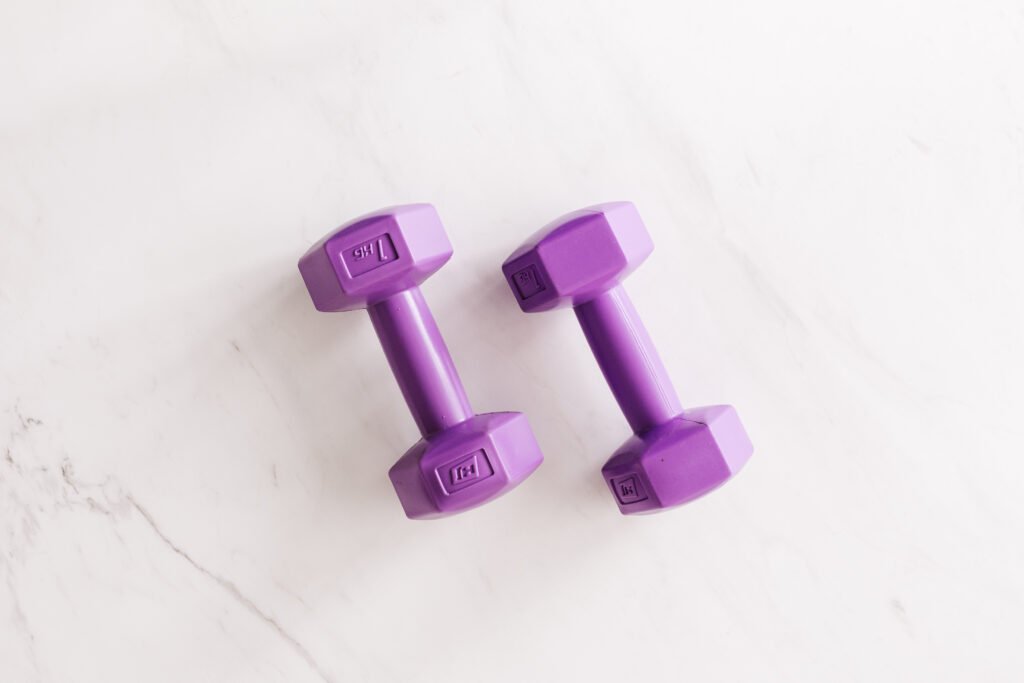In order to maximize the effectiveness of your workout routine, it is crucial to understand the importance of adjusting the incline and decline on weight benches for different exercises. The angle at which you position the bench can greatly impact the target muscles and level of difficulty in your workouts. Whether you are focusing on building strength, toning specific areas, or improving overall fitness, knowing how to properly adjust the incline and decline will help you achieve optimal results. By making these adjustments, you can tailor your workout to target specific muscle groups and challenge yourself in new ways.

1. Introduction
Adjusting the incline and decline on weight benches is a crucial aspect of maximizing the effectiveness of your workout routine. Whether you are a seasoned athlete or just starting out, understanding and utilizing the various angles of incline and decline can significantly enhance your muscle engagement, target different muscle groups, improve your range of motion, and reduce joint stress. In this article, we will explore the importance of adjusting incline and decline, learning how to properly adjust weight benches, and understanding the appropriate incline and decline angles for different exercises.
2. Importance of Adjusting Incline and Decline
2.1 Maximizing Muscle Engagement
One of the primary reasons for adjusting the incline and decline on weight benches is to maximize muscle engagement. When you perform exercises on a flat bench, your muscles are utilized in a relatively balanced manner. However, by introducing incline and decline angles, you can specifically target and engage different muscle groups. For example, an incline angle on a bench press shifts the focus to the upper chest and shoulders, while a decline angle targets the lower chest and triceps. By adjusting the incline and decline, you can effectively stimulate all areas of a muscle, leading to greater muscle growth and strength gains.
2.2 Targeting Different Muscle Groups
Different exercises target different muscle groups, and adjusting the incline and decline angles on weight benches can help you tailor your workouts to specific muscle groups. For example, incline bench presses primarily target the upper chest, shoulders, and triceps, while decline bench presses focus on the lower chest, triceps, and anterior deltoids. By understanding how to adjust the incline and decline angles, you can specifically target the muscle groups you want to develop, helping you achieve a more balanced and sculpted physique.
2.3 Enhancing Range of Motion
Adjusting the incline and decline angles on weight benches can also enhance your range of motion during exercises. By performing exercises on an incline or decline position, you are able to move your muscles and joints through a greater range of motion compared to a flat bench. This increased range of motion can lead to better muscle activation, improved flexibility, and enhanced muscle growth. Additionally, incorporating different angles of incline and decline can help break through plateaus and challenge your muscles in new ways, preventing stagnation in your fitness routine.
2.4 Reducing Joint Stress
Another benefit of adjusting the incline and decline angles on weight benches is the reduction of joint stress. In some exercises, such as the flat bench press, the shoulders and elbows may experience excess strain, especially with heavy weights. By incorporating incline and decline positions, you can alleviate some of this stress by shifting the load to different muscles and joints. The adjustable positions of weight benches allow you to find the optimal angle that reduces joint stress while still effectively targeting the intended muscle groups.
3. Adjusting Incline and Decline on Weight Benches
3.1 Understanding the Mechanism
To effectively adjust the incline and decline angles on weight benches, it is crucial to understand the mechanism of your specific bench. Most weight benches have adjustable backrests that can be altered to various angles. Some benches have preset angles, while others have continuous adjustment options. Familiarize yourself with the specific mechanisms and ensure you are comfortable and confident in adjusting the angle before continuing with your workout.
3.2 Safety Precautions
Safety should always be a top priority when adjusting the incline and decline angles on weight benches. Ensure that the bench is stable and secure before making any adjustments. Double-check that all locking mechanisms are properly engaged to prevent any accidental changes in angle during your workout. It is also important to use a spotter whenever performing exercises with heavy weights or when attempting new angles to prevent any potential injuries.
3.3 Appropriate Adjustments for Different Exercises
Different exercises require different adjustments to the incline and decline angles. It is essential to understand the appropriate incline or decline angles for each exercise to effectively target the desired muscle groups. Here are some common exercises and their recommended incline or decline angles:
4. Adjusting Incline and Decline for Chest Exercises
4.1 Flat Bench Press
For the flat bench press, adjust the weight bench to a horizontal position. This angle allows for a balanced engagement of the chest, shoulders, and triceps.
4.2 Incline Bench Press
To target the upper chest and shoulders, adjust the bench to a 30-45 degree incline. This angle places greater emphasis on the upper portion of the pectoral muscles and anterior deltoids.
4.3 Decline Bench Press
For the decline bench press, adjust the bench to a 15-30 degree decline angle. This position primarily targets the lower chest and triceps.
4.4 Dumbbell Flyes
Adjust the bench to a slight incline, around 15-30 degrees, for dumbbell flyes. This angle allows for a greater stretch and contraction of the chest muscles.
4.5 Push-ups on an Incline/Decline Bench
Performing push-ups on an incline bench targets the lower chest and triceps, while performing them on a decline bench engages the upper chest and shoulders.

5. Adjusting Incline and Decline for Shoulder Exercises
5.1 Shoulder Press
For the shoulder press, adjust the bench to a vertical position (90 degrees). This angle allows for the most balanced engagement of the shoulders and triceps.
5.2 Arnold Press
Similar to the shoulder press, the Arnold press is also performed on a vertical bench to target the shoulders and triceps. Adjust the bench to a 90-degree angle for this exercise.
5.3 Lateral Raises
Lateral raises are typically performed while standing up, but if you prefer to do them while seated, adjust the bench to a vertical (90-degree) position. This angle allows for a stable base and proper engagement of the lateral deltoids.
5.4 Front Raises
Similar to lateral raises, front raises are commonly performed while standing. However, if you choose to perform them seated, adjust the bench to a vertical (90-degree) position for optimal muscle engagement.
6. Adjusting Incline and Decline for Back Exercises
6.1 Bent-Over Rows
Adjust the bench to a 45-degree incline for bent-over rows. This angle allows for a proper range of motion and engagement of the back muscles while maintaining stability.
6.2 Lat Pulldowns
Lat pulldowns are typically performed on a pulldown machine. However, if you choose to perform them on a bench, adjust the bench to a vertical (90-degree) position and use appropriate attachments to mimic the movement.
6.3 Reverse Flyes
Similar to bent-over rows, adjust the bench to a 45-degree incline for reverse flyes. This angle allows for a proper range of motion and targets the rear deltoids and upper back muscles.

7. Adjusting Incline and Decline for Leg Exercises
7.1 Squats
Squats are typically performed standing, but if you prefer to perform them on a bench, adjust the bench to a vertical (90-degree) position. However, it is important to note that using a weight bench for squats may not provide the same stability and support as squat racks or power cages.
7.2 Lunges
Lunges are also typically performed standing, but if you choose to perform them on a bench, adjust the bench to a vertical (90-degree) position for added stability and support.
7.3 Leg Press
Leg press machines are designed specifically for leg exercises and allow you to adjust the incline and decline angles. Consult the machine’s specific instructions and adjust the angles according to your comfort and targeting preferences.
7.4 Calf Raises
Calf raises can be performed on a flat bench. However, if you prefer additional range of motion, adjust the bench to a decline position of about 15-30 degrees to enhance the stretch of the calf muscles.
8. Adjusting Incline and Decline for Arm Exercises
8.1 Biceps Curls
Arm exercises like biceps curls can be performed on a flat bench. However, if you prefer to target the biceps from a different angle, you can adjust the bench to a slight incline (around 15 degrees).
8.2 Triceps Extensions
Triceps extensions can be performed on a flat bench. However, if you prefer to target the triceps from a different angle, you can adjust the bench to a slight decline (around 15 degrees).
9. Adjusting Incline and Decline for Abdominal Exercises
9.1 Sit-Ups
For sit-ups, adjust the bench to a decline angle. This position allows for better activation of the abdominal muscles and reduces strain on the hip flexors.
9.2 Russian Twists
Russian twists can also be performed on a decline bench. Adjust the bench to a slight decline to engage the abdominal muscles and obliques effectively.
9.3 Decline Crunches
To target the abdominal muscles more effectively, perform decline crunches on a decline bench. Adjust the bench to an angle that allows for a full contraction of the abs without excessive strain on the neck and lower back.
11. Conclusion
Adjusting the incline and decline angles on weight benches is an essential aspect of optimizing your workouts. By understanding the importance of adjusting the angles, you can maximize muscle engagement, target specific muscle groups, enhance range of motion, and reduce joint stress. Remember to familiarize yourself with the mechanism of your weight bench, follow safety precautions, and make appropriate adjustments for different exercises. By incorporating incline and decline angles into your workout routine, you can take your fitness journey to new heights and achieve your desired results more effectively.



One thought on “Adjusting Incline And Decline For Different Exercises”